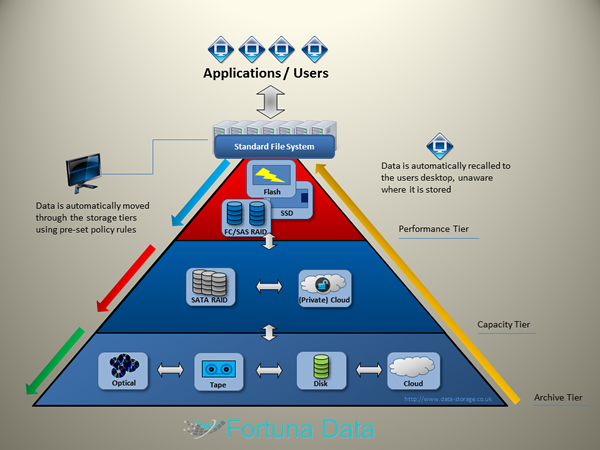Automated Storage Tiering Using PoINT Storage Manager
The high relevance of electronic business data requires fundamentally different requirements in handling. The capacity of the primary storage is not unlimited, and in addition expensive, so alternatives have to be integrated into the storage area.
When considering the life cycle of file it is clear that the requirements change in the handling and performance in the individual cycles. The Automated storage tiering is an extension of a classical two-level hierarchical storage management (HSM) to a three-level tiered storage architecture.
The PoINT Storage Manager implements the three-tiered storage architecture as follows:
- Animal performance (high-performance storage systems for active data)
- Capacity tier (capacity-oriented storage systems for inactive data)
- Archive tier (storage systems optimised for long-term archiving)

The storage tiering thus enables more efficient use of individual hardware components, an avoidance of unnecessary migration of data by replacing old hardware and a reduction of new investment in high-performance storage. Possibility of use of different storage technologies (hard disk, tape, optical and cloud) during storage simplified tiering compliance with company policy and regulatory compliance, to serve the specific requirements of the data optimally meet. The Automated Storage Tiering allows inactive data or outsource to archived data to secondary storage, thus providing a logical consequence to increase the efficiency of work processes as well as to optimize the efficiency dar. The concept of automated storage tiering, allowing not only the migration of inactive data to a lower storage level but also a policy-based migration and / or replication, so that a two-dimensional memory architecture is within the animal available. Due to the increasing information density and the associated capacities of the approach of the Automated Storage Tiering the new demands on storage infrastructure, would also allow a use optimisation.
